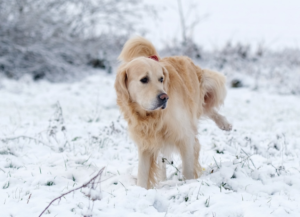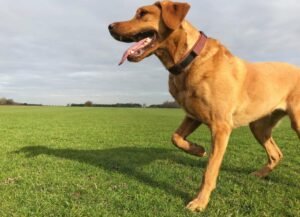What Is Soft Tissue Sarcoma in Dogs?
Soft tissue sarcoma (STS) is a general term for tumors that can occur in the soft and connective tissues of the body. Examples of soft and connective tissue include muscles, nerves, tendons, blood vessels, and fat.
Tumors that start in soft and connective tissue can be non-cancerous (benign), but those that belong to the soft tissue sarcoma group are cancerous (malignant).
Soft tissue sarcoma can occur almost anywhere because soft and connective tissues are found throughout the body. However, it most commonly occurs in the skin and layers of tissue just below the skin. They make up 8 to 15% of all tumors in dogs that occur in these areas, and most grow slowly.
Soft Tissue Sarcoma Grading
Soft tissue sarcoma tumors are graded on a scale of 1 to 3:
-
Grade 1 (low): Most cases of soft tissue sarcoma in dogs are Grade 1. They rarely spread (metastasize) to other areas of the body or invade neighboring tissues.
-
Grade 2 (intermediate): Grade 2 is the second most common diagnosed grade for soft tissue sarcoma. They similarly do not typically spread to or invade other parts of the body.
-
Grade 3 (high): Only 7 to 17% of soft tissue sarcoma cases are Grade 3. Likelihoods of recurrence and metastasis are higher than in Grades 1 and 2, and Grade 3 soft tissue sarcoma will spread in 40 to 50% of cases diagnosed.
Staging is determined by rating three primary factors:
-
How different the cancerous cells look and act in comparisons with healthy cells.
-
How many of the tumor’s cells are dividing, which helps to determine how fast the tumor is growing.
-
How many of the tumor’s cells are dying. Cell death (apoptosis) is a normal process for all cells, but cancerous cells often find ways to evade it so that the tumor can continue to grow.
Symptoms of Soft Tissue Sarcoma in Dogs
Signs of soft tissue sarcomas depend on the location of the tumor in your dog’s body.
Some common areas include:
-
Tumors arising from muscle tissue: Your dog may exhibits signs of pain (yelping, pulling away) when touching the affected area and may have a visible and firm mass.
-
Tumors on the legs, which may interfere with walking and cause limping or limited mobility.
-
Tumors in the abdomen, which may result in vomiting, diarrhea, weight loss, or decreased appetite.
-
Tumors arising from nervous tissue, which may cause pain, lameness, muscle atrophy, and paralysis.
-
Tumors in the mouth, which may result in bad breath, trouble eating, or decreased appetite.
-
Tumors affecting the reproductive organs (such as the prostate), which may result in difficulty urinating or defecating.
Causes of Soft Tissue Sarcoma in Dogs
There is no single known cause for the development of soft tissue sarcoma. Research suggests that factors such as genetics, age, environment, hormones, body size, previous physical trauma to the body, and chronic inflammation can all play a role.
Dog breeds that are disproportionately diagnosed with soft tissue sarcoma are all larger in size and include the Airedale Terrier, Basset Hound, Bernese Mountain Dog, Boxer, Great Dane, and Saint Bernard.
As is the case for most tumor types, older dogs are more likely to develop soft tissue sarcoma than younger dogs.
How Veterinarians Diagnose Soft Tissue Sarcoma in Dogs
Not all lumps and bumps are cause for concern, but they should all be checked out by your veterinarian. They will need to perform diagnostic testing to determine whether the lump is soft tissue sarcoma. Fine needle aspiration (FNA) is the most common test used, where a small needle with a syringe is inserted into the mass and extracts a sample of cells to view under a microscope.
A biopsy may be needed if diagnostic testing from an FNA is not definitive (or allows the veterinarian to determine whether the cells are cancerous or not). A biopsy is more invasive than FNA because it involves cutting off a piece of tumor. It can reveal more information about the tumor, such as how quickly it’s growing, its stage, and what treatment approach may be most suitable. Biopsies typically involve the use of a local anesthetic to keep your dog still and comfortable.
Depending on the results, additional testing such as chest X-rays or abdominal ultrasound may be recommended to see if the cancer has spread. An analysis of cells and certain chemicals in your dog’s blood, as well as the examination of your dog’s urine, may also be recommended. In some cases, additional imaging such as a computed tomography (CT) may be advised.
Treatment of Soft Tissue Sarcoma in Dogs
Treatment will depend on the type of tumor, its size and location, and the overall health of your dog. Your veterinarian will work with you to determine the best treatment plan for your pet. Surgery is the most common treatment for soft tissue sarcoma. It is the most likely option to completely remove the tumor, has the fewest negative side effects, and is the cheapest treatment choice in the long term.
Grade 1 tumors are typically good candidates for surgery and rarely recur if completely removed. Grade 2 tumors are also often good candidates for surgery and similarly have a low likelihood of recurrence if completely removed. Depending on the location and grade, your veterinarian may refer you to a veterinary surgeon or oncologist to help determine the best approach for your pet.
Soft tissue sarcoma is unique in that these tumors have arm-like structures that extend outward. This makes the removal of the entire tumor challenging. Follow-up surgeries or radiation therapy may be necessary to ensure that all parts of the tumor are destroyed.
Surgery may not be an option for some cases of soft tissue sarcoma because the tumor is too large or cannot be reached. Radiation is often advised in these situations. Radiation is rarely able to destroy the entire tumor, but it can slow down its growth.
Chemotherapy may be advised as part of your dog’s treatment plan either alone or with surgery or radiation. Chemotherapy is most often suggested for dogs with Grade III soft tissue sarcoma because of its increased ability to spread to other parts of the body.
Recovery and Management of Soft Tissue Sarcoma in Dogs
The prognosis for Grade 1 or 2 soft tissue sarcoma is excellent with surgery. Recurrence after surgery occurs in 7% to 30% of cases and may be further improved with the addition of radiation therapy and/or chemotherapy.
Pet parents of dogs with a history of soft tissue sarcoma can have follow-up appointments for at least two years after surgery.
Soft Tissue Sarcoma in Dogs FAQs
What is the prognosis for a dog diagnosed with a soft tissue sarcoma?
Dogs with cases of Grade 1 or 2 soft tissue sarcomas that can be surgically removed have a good to excellent prognosis. Grade 3 soft tissue sarcoma has a more guarded prognosis.
Is soft tissue sarcoma painful in a dog?
Soft tissue sarcoma is usually not painful. Soft tissue sarcomas are commonly caught early due to their visible nature, and they can be treated. More advanced soft tissue sarcomas toward the surface of the skin may cause the skin to break open, which can be painful.
How fast does soft tissue sarcoma progress in a dog?
Soft tissue sarcomas are typically slow-growing, although some can develop in just a few weeks. Lower-grade soft tissue sarcoma is unlikely to spread to other parts of the body.
Featured Image: iStock.com/hoozone
References
Dennis MM, Sporran KD, Bacon NJ, Schulman FY, Foster RA, Powers BE. Prognostic factors for cutaneous and subcutaneous soft tissue sarcomas in dogs. Veterinary Pathology 2011;48(1):73-84.
Villalobos AE. Overview of Tumors of the Skin and Soft Tissues in Animals. Merck Manual Veterinary Manual. November 2022.




